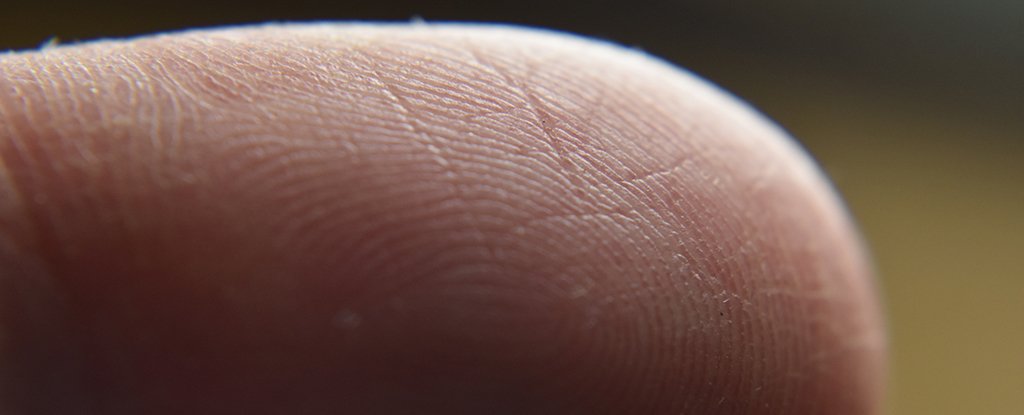
The skin – the largest organ in the human body – envelops us from head to toe, allowing us to touch, feel and interact with the outside world. But there is a part of that organ that is even better adapted to touch than any other.
A new study has revealed how receptive the sensory neurons in our fingers are: As it turns out, we can detect the touch on the tiny scale of a single fingerprint ridge.
“You would expect a single papillary ridge to play a role, but it has not been proven [before]”Said Ewa Jarocka, co – author of the study at Umeå University in Sweden the Guardian.
The sensory neurons attached to the receptors are dotted just below the surface of the skin, allowing us to detect touch, vibration, pressure, pain and more. Our hands alone contain tens of thousands of these neurons, each with receptors on a small area of the skin called the receptive field.
To map these fields, the researchers tied the arms of 12 healthy people and glued their nails to the plastic supports to make sure they really couldn’t move. Then, a machine rolled small cones 0.4 millimeters wide at a distance of about 7 mm on their skin (you can see how they look below) and the team recorded the response of each neuron using an electrode in the participants’ arms.

Specifically, they mapped the most sensitive areas – known as subfields – in these receptive fields.
By calculating the detection areas of sensory neurons and mapping them to the fingerprint, the team found that the width of the detection area was equivalent to the width of a fingerprint ridge.
These subfields also did not move when the machine rotated the dots faster or slower or changed direction, suggesting that these sensitive areas are anchored to the ridges of the fingerprints.
“We report that the sensitivity of the subfield arrangement for both types of neurons corresponds on average to a spatial period of ~ 0.4 mm and we provide evidence that the spatial selectivity of a subfield occurs because its associated receptor organ measures mechanical events limited to a single papillary ridge.” researchers write in their new paper.
 Receptive fields projected on a fingerprint. (Jarocka et al., J. Neurosci, 2021)
Receptive fields projected on a fingerprint. (Jarocka et al., J. Neurosci, 2021)
Interestingly, this is the first study to show that our fingerprint ridges help us feel the world around us more accurately.
“We have all those multiple hotspots and each responds to the details of 0.4 millimeters, which is the approximate width of [fingerprint] ridge, “Jarocka said The new scientist.
“Then our brain gets all this information. This really provides an explanation for how we can be so skilled and have such great sensitivity at our fingertips.”
The research was published in Journal of Neuroscience.